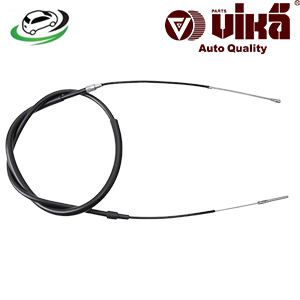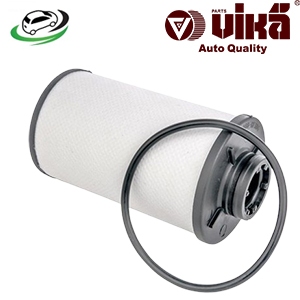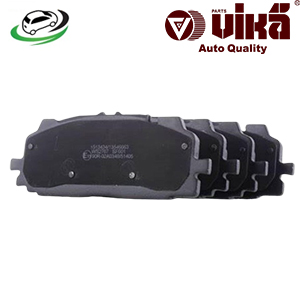-17%
Get Front Brake Pads Audi RS5 2.9L V6/ S5 3.0L V6/ S5 Sportback 3.0L V6/ RS5 Sportback 2.9L V6 4M0698151T
Front brake pads are a critical component of a vehicle’s braking system, playing a pivotal role in ensuring safe and effective stopping power. This guide provides an in-depth look into the function, design, types, importance, common issues, maintenance, and replacement of front brake pads.
Function of Front Brake Pads
The primary function of front brake pads is to create friction against the brake rotors, slowing down or stopping the vehicle. Here’s how they work:
- Friction Creation: When the brake pedal is pressed, the brake calipers squeeze the brake pads against the spinning rotors attached to the wheels. The friction generated between the pads and the rotors slows the rotation of the wheels, thereby reducing the vehicle’s speed or bringing it to a complete stop.
- Heat Dissipation: During braking, a significant amount of heat is generated due to the friction between the brake pads and rotors. High-quality brake pads are designed to withstand this heat without degrading, ensuring consistent braking performance.
- Wear Management: Brake pads are designed to wear down over time. As they wear, the material is gradually removed, which helps to maintain a clean and effective braking surface on the rotor. This wear process is natural and expected, but it necessitates regular monitoring and replacement.
- Noise and Vibration Reduction: Modern brake pads often include features like shims and coatings that help to reduce noise and vibrations during braking, providing a smoother and quieter ride.
Components of Front Brake Pads
Front brake pads are part of a larger braking system that includes several components working together:
- Brake Pads: The brake pads themselves consist of a metal backing plate and a friction material. The backing plate provides structural support, while the friction material is the part that contacts the rotor to create braking force.
- Brake Calipers: The brake calipers house the brake pads and are responsible for pressing them against the rotors when the brake pedal is engaged. Calipers can be of the fixed or floating variety, with floating calipers being more common in most vehicles.
- Brake Rotors: The rotors, also known as brake discs, are attached to the wheel hubs. The brake pads press against the rotors to slow the vehicle down. Rotors can be solid or ventilated, with ventilated rotors offering better heat dissipation.
- Shims and Insulators: These components are often attached to the back of the brake pads to reduce noise and vibration. They also help to ensure even wear of the pads.
- Wear Sensors: Many modern brake pads come with built-in wear sensors that alert the driver when the pads are nearing the end of their lifespan. This helps to prevent damage to the rotors and ensures timely replacement.
Types of Brake Pads
There are several types of brake pads available, each designed for different driving conditions and preferences:
- Organic (Non-Asbestos Organic – NAO) Brake Pads: Made from a mixture of fibers, fillers, and binders, these pads are known for being quiet and producing less dust. However, they tend to wear out faster and may not perform as well under extreme conditions.
- Semi-Metallic Brake Pads: Composed of a mixture of metal fibers and other materials, semi-metallic pads offer better performance and durability than organic pads. They are more resistant to heat and wear, making them suitable for high-performance applications. However, they can be noisier and produce more brake dust.
- Ceramic Brake Pads: Made from a combination of ceramic fibers and other materials, ceramic pads provide excellent braking performance with minimal noise and dust. They are long-lasting and perform well in a variety of conditions, but they are also more expensive than other types of pads.
- Low-Metallic NAO Brake Pads: These pads are similar to organic pads but contain a small amount of metal to improve heat dissipation and braking performance. They offer a good balance of performance, noise reduction, and cost.
- Performance or Racing Brake Pads: These are designed for high-performance vehicles or racing applications, where braking demands are extreme. They are typically made from specialized materials that can withstand high temperatures and provide maximum stopping power. However, they may be less suitable for everyday driving due to increased noise and wear.
Importance of Front Brake Pads
The front brake pads are crucial for several reasons:
- Primary Braking Force: In most vehicles, the front brakes handle the majority of the braking load, typically around 60-70%. This is because the vehicle’s weight shifts forward during braking, increasing the load on the front wheels. Therefore, the front brake pads play a critical role in stopping the vehicle safely.
- Safety: The effectiveness of the front brake pads directly impacts the vehicle’s ability to stop quickly and safely. Worn or damaged brake pads can significantly reduce braking performance, increasing the risk of accidents.
- Protection of Other Components: Well-maintained brake pads help to protect the brake rotors from damage. If the pads wear down too much, the metal backing plate can come into contact with the rotor, causing grooves or scoring that can lead to costly repairs.
- Compliance with Regulations: In many regions, vehicles must pass regular safety inspections that include checking the condition of the brake pads. Ensuring that your brake pads are in good condition helps to meet these legal requirements.
Common Issues with Front Brake Pads
Despite their durability, front brake pads can experience several issues over time. Common problems include:
- Wear and Tear: Brake pads naturally wear down with use. As the friction material is consumed, the braking performance diminishes. Regular inspection and timely replacement are essential to maintaining effective braking.
- Glazing: If the brake pads become overheated, the surface of the friction material can harden and become smooth, a condition known as glazing. Glazed brake pads can reduce braking efficiency and increase stopping distances.
- Noise: Squeaking or squealing noises during braking can indicate that the brake pads are worn out or that the shims and insulators need attention. In some cases, noise can also be caused by the use of low-quality brake pads.
- Vibration: If the brake pads wear unevenly or if the rotors are warped, you may experience vibration or pulsation in the brake pedal during braking. This can also indicate that the brake pads need to be replaced or that the rotors need to be resurfaced or replaced.
- Brake Fade: Brake fade occurs when the braking performance diminishes due to excessive heat buildup. This can happen during prolonged or aggressive braking and is more common with lower-quality brake pads.
- Uneven Wear: Uneven wear on the brake pads can be caused by issues with the brake calipers, such as sticking or binding. It can also result from misalignment or issues with the suspension system.
Signs of Worn Front Brake Pads
Recognizing the signs of worn front brake pads can help you address issues before they become more severe. Common symptoms include:
- Reduced Braking Performance: If you notice that your vehicle is taking longer to stop or that you need to press the brake pedal harder than usual, it may be a sign that the front brake pads are worn and need replacement.
- Squeaking or Squealing Noises: A high-pitched squeaking or squealing noise when applying the brakes is often an indicator that the brake pads are worn down and need to be replaced. This noise is typically caused by a built-in wear indicator that contacts the rotor when the pad material is low.
- Grinding Noise: A grinding noise when braking usually indicates that the brake pads are completely worn out, and the metal backing plate is making contact with the rotor. This can cause significant damage to the rotor and should be addressed immediately.
- Vibration or Pulsation: If you feel a vibration or pulsation in the brake pedal when braking, it could indicate uneven wear on the brake pads or a problem with the rotors. This should be inspected by a professional to determine the cause.
- Brake Warning Light: Some vehicles have a brake warning light that will illuminate if there is an issue with the brake system, including worn brake pads. If this light comes on, it’s important to have your brakes inspected as soon as possible.
Maintenance and Replacement of Front Brake Pads
Proper maintenance and timely replacement of front brake pads are essential for ensuring optimal braking performance and safety. Here are some tips:
- Regular Inspection: During routine vehicle maintenance, have the front brake pads inspected for wear, cracks, or other damage. Pay attention to the thickness of the friction material and the condition of the rotors.
- Timely Replacement: Most brake pads need to be replaced when the friction material is worn down to about 3-4 millimeters. It’s important to follow the manufacturer’s recommendations for replacement intervals to ensure safe braking.
- Use Quality Parts: When replacing brake pads, choose high-quality parts that are appropriate for your vehicle and driving conditions. While cheaper pads may save money upfront, they can wear out faster and may not provide the same level of performance.
- Check and Replace Rotors: When replacing brake pads, it’s also a good idea to inspect the rotors. If the rotors are worn, scored, or warped, they should be resurfaced or replaced to ensure optimal braking performance.
- Bed-In Procedure: After installing new brake pads, follow a proper bed-in procedure to ensure that the pads and rotors are properly mated. This helps to maximize the performance and lifespan of the new pads.
- Professional Installation: If you’re not comfortable replacing brake pads yourself, it’s best to have the work done by a professional mechanic. Proper installation is critical to the performance and safety
of the braking system, and a professional can ensure that everything is installed correctly and functioning properly.
Consequences of Neglecting Front Brake Pad Maintenance
Neglecting the maintenance and replacement of front brake pads can lead to several serious consequences:
- Reduced Braking Efficiency: Worn brake pads reduce the vehicle’s braking efficiency, leading to longer stopping distances. This can be particularly dangerous in emergency situations where quick braking is required to avoid a collision.
- Damage to Brake Rotors: If the brake pads wear down to the metal backing plate, this metal-to-metal contact with the rotors can cause significant damage. Rotors can become grooved or warped, leading to costly repairs or replacements.
- Increased Repair Costs: Ignoring worn brake pads can lead to more extensive damage to the braking system, including the rotors, calipers, and other components. This can result in higher repair costs than if the pads were replaced in a timely manner.
- Brake Failure: In extreme cases, severely worn or damaged brake pads can lead to brake failure. This can be catastrophic, particularly at high speeds, and poses a serious safety risk to the driver, passengers, and others on the road.
- Noise and Vibration: Neglected brake pads often result in noisy and uncomfortable braking. This not only affects the driving experience but can also be a sign of more serious underlying issues that need to be addressed.
- Legal and Safety Implications: Driving with worn-out brake pads can result in a failed vehicle inspection and legal issues in many regions. It’s essential to keep the braking system in good condition to comply with safety regulations and ensure the vehicle is roadworthy.
Follow us on Facebook for more parts.



